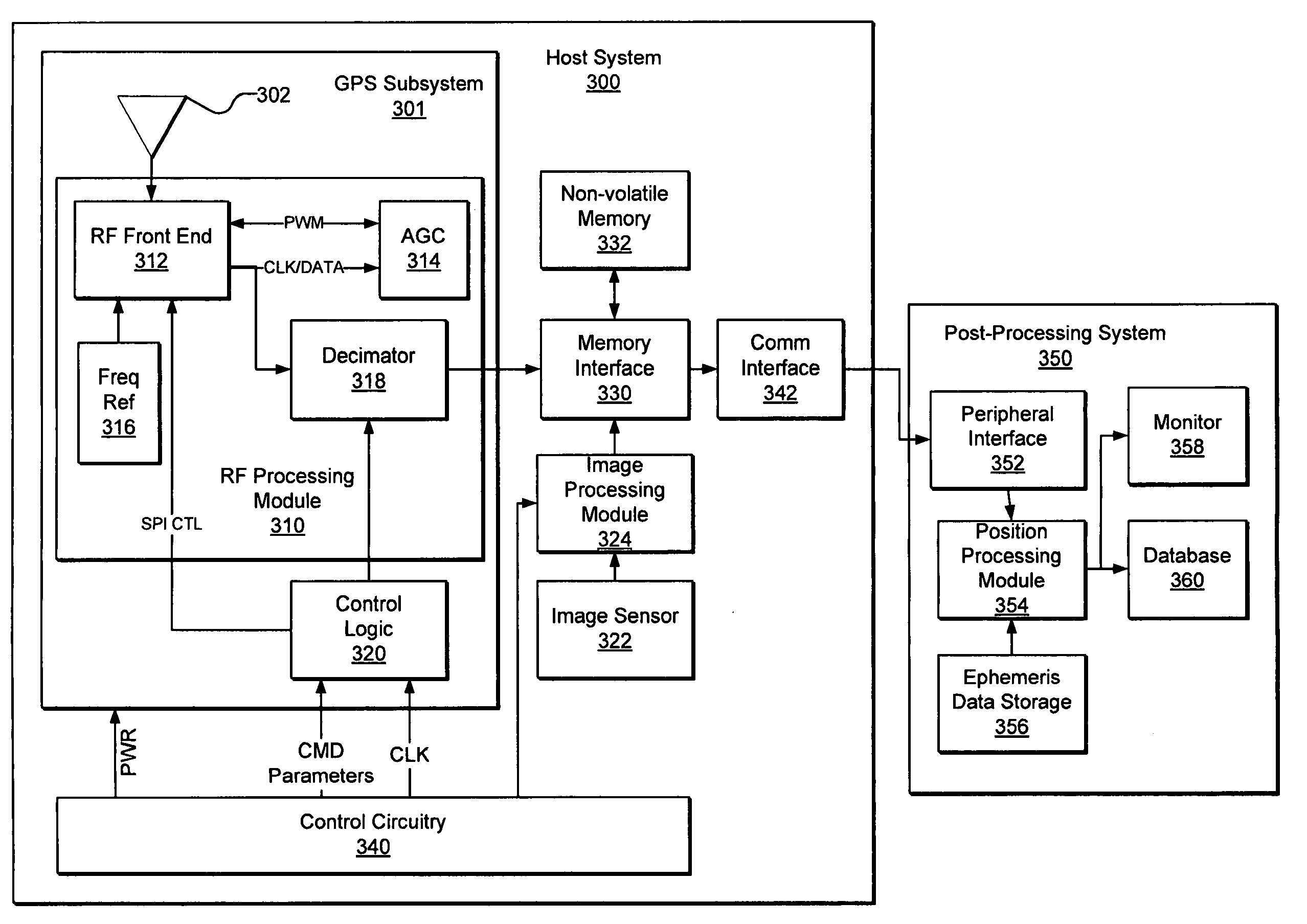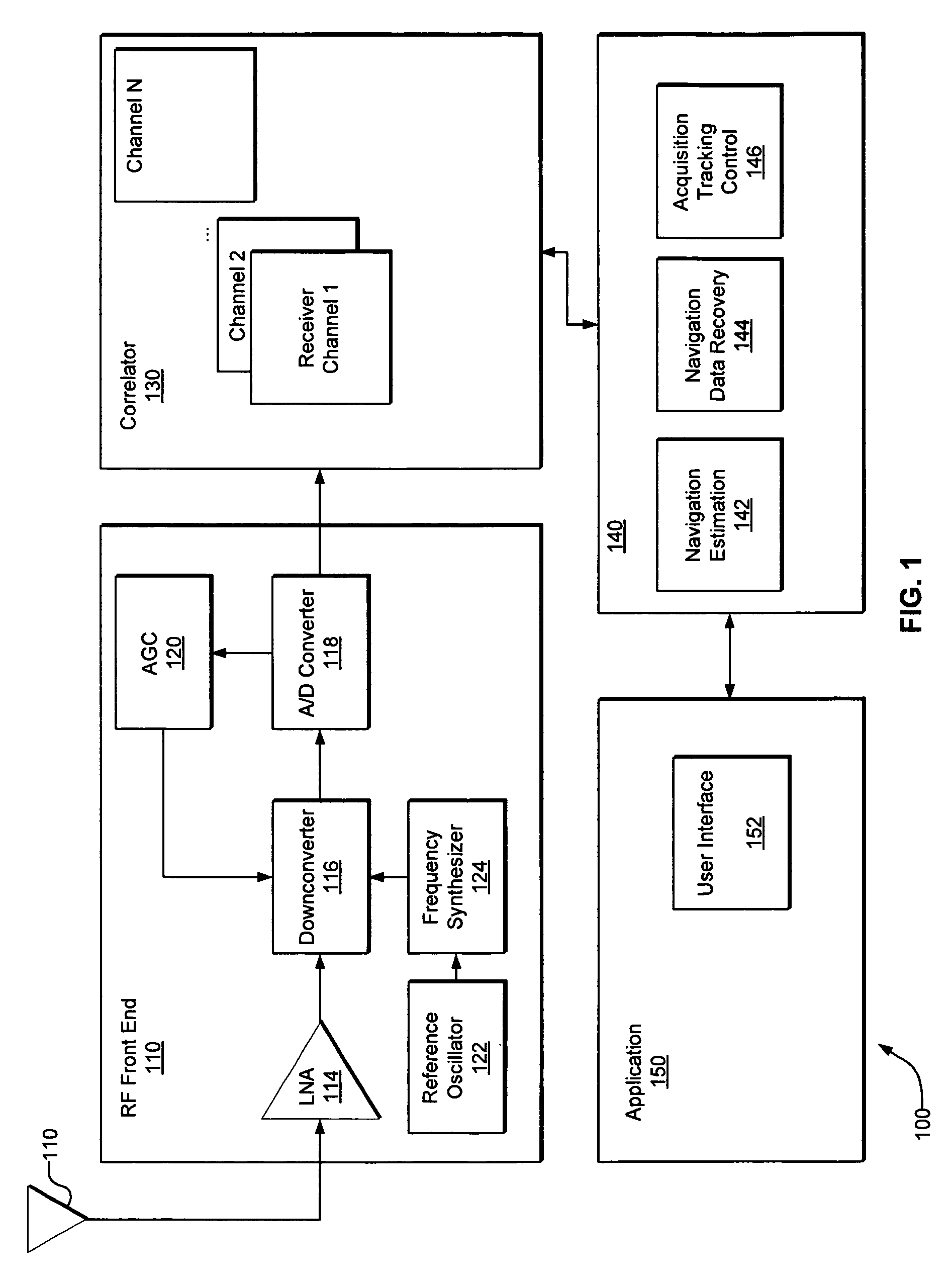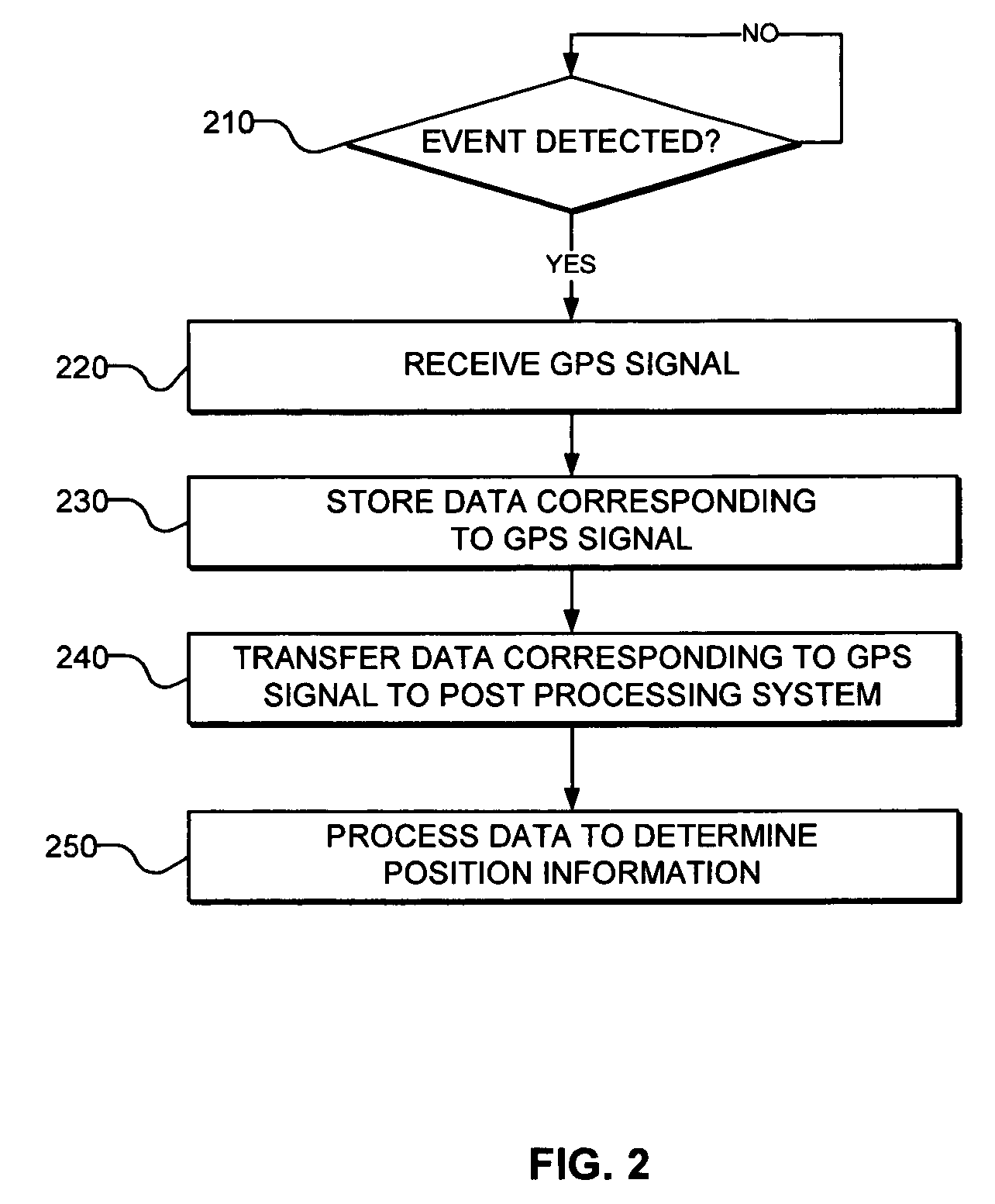Location tagging using post-processing
a post-processing and location technology, applied in the field of location tagging using post-processing, can solve the problems of not being able to collect new broadcast ephemeris data from gps satellites or from a server, gps receivers are typically unable to provide position information, and the process of receiving and decoding adds substantially to the processing tim
- Summary
- Abstract
- Description
- Claims
- Application Information
AI Technical Summary
Problems solved by technology
Method used
Image
Examples
Embodiment Construction
[0022] The following description is meant to be illustrative only and not limiting. Other embodiments of this invention will be obvious from this description to those skilled in the art.
[0023] In accordance with various embodiments, systems and methods are provided for location tagging using post-processing of a satellite positioning signal. FIG. 2 is a flow chart of a positioning signal processing method, in accordance with embodiments of the present invention. In step 210, a system detects the occurrence of a predetermined event. In step 220, the system receives a signal corresponding to the signals detected from a plurality of positioning satellite vehicles, such as GPS satellites. In step 230, the host system stores data corresponding to the received GPS signal. In step 240, the data corresponding to the received GPS signal is transferred to a post-processing system. Finally, in step 250, the data corresponding to the received GPS signal is processed to obtain information regar...
PUM
 Login to View More
Login to View More Abstract
Description
Claims
Application Information
 Login to View More
Login to View More - R&D
- Intellectual Property
- Life Sciences
- Materials
- Tech Scout
- Unparalleled Data Quality
- Higher Quality Content
- 60% Fewer Hallucinations
Browse by: Latest US Patents, China's latest patents, Technical Efficacy Thesaurus, Application Domain, Technology Topic, Popular Technical Reports.
© 2025 PatSnap. All rights reserved.Legal|Privacy policy|Modern Slavery Act Transparency Statement|Sitemap|About US| Contact US: help@patsnap.com



